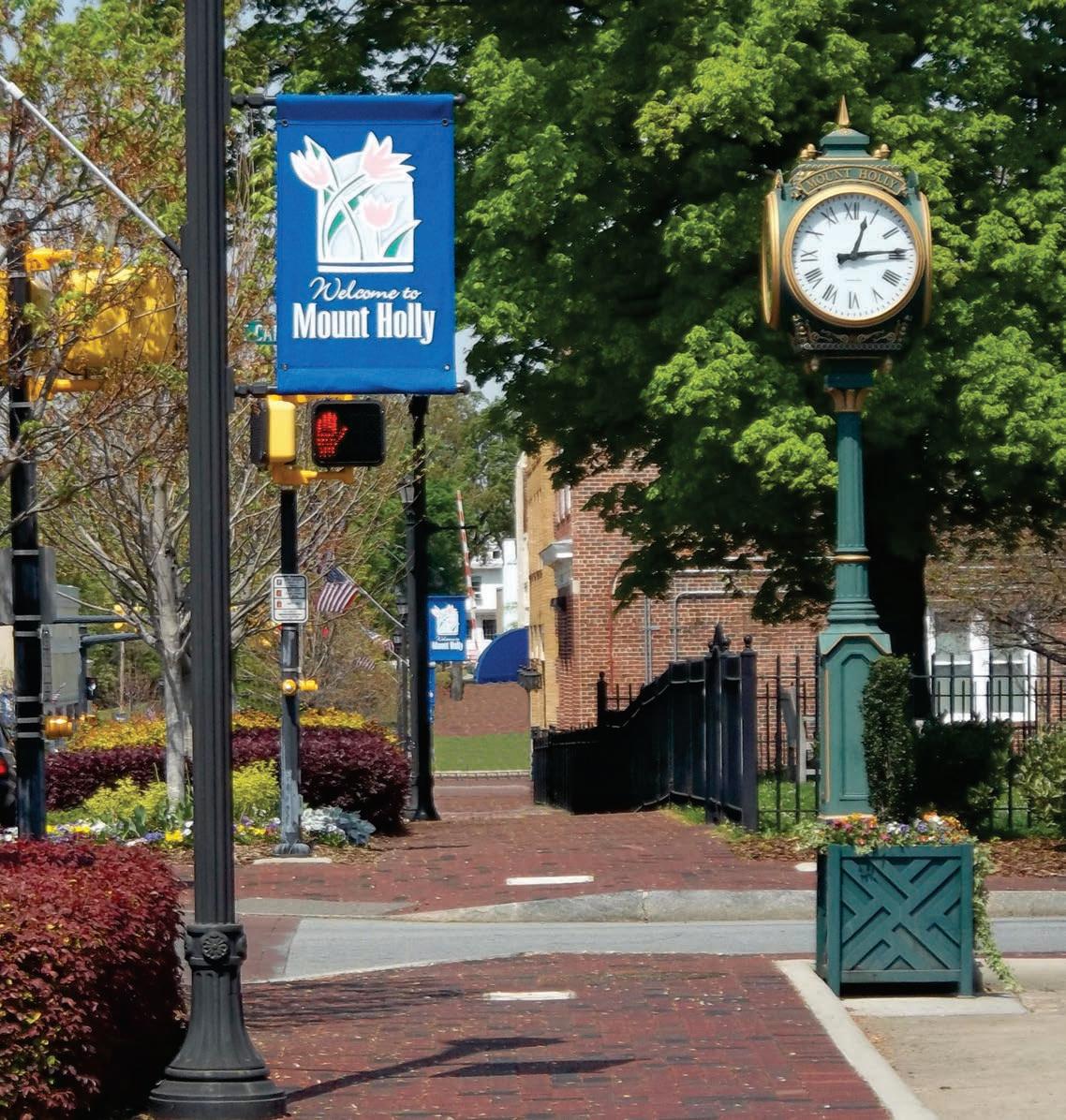






















Opening Remarks ........................................ Gary Neely
Presentation of Colors ................................. Rankin Safety Patrol
Pledge of Allegiance ................................... Rankin Safety Patrol
Singing of our National Anthem ................ Ashley Flowers
Invocation
Dinner
Welcome .....................................................
Mayor Bryan Hough
Recognition of Special Guests .................... Eddie Wilson
Past Inductees
Corporate Sponsors
City and County Officials
Committee Members
Special Thanks
Mount Holly Sports Hall of Fame Community Spirit Award
Sponsored by American & Efird ..................... Eddie Wilson & Matt Nichols
Presented to Henry Massey
Hawks Baseball 1964-1967 .......................... Gary Neely
Tony Leroy McConnell ............................... Gary Neely
William Phillip White ................................ Gary Neely
John Logan .................................................. Derek Spears
Sue Carlton Whitley ................................... Doug Smith
Jeff Lee .......................................................... Doug Smith
Closing Remarks ......................................... Gary Neely
MHHS Song ............................................... Eddie Wilson
EGHS Song ................................................. Ashley Flowers
President - Gary Neely
Vice President - Scott Pope
Treasurer - Doug Smith
Secretary - Eddie Wilson
Committee Members - James Ford, Derek Spears, Ray Campbell and Richard Browne





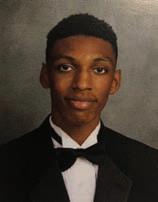

John Griffin, SCHS will be attending Fayetteville State
Bob & Marguerite Randall Scholarship
Sponsored by Laura & Jeff Woodhead
Ekta Patel, SCHS will be attending UNC-CH
Pat Hartsell Scholarship
Sponsored by Larry and Jan Hartsell
Thaddeus McInnis, EGHS will be attending NCSU
Elson and Lucy Neely Scholarship
Sponsored by Gary and Teresa Neely
Deja Ross, SCHS will be attending CVCC
Joe & Marie Spears Scholarship
Sponsored by Coach Larry Armstrong


The MHSHOF scholarship is awarded on the basis of a competitive process that considers academic achievement, extracurricular and community involvement and financial need.
Four five hundred dollar scholarships will be paid directly to the recipient’s school, where the student must be enrolled and in good standing.
To be considered for this scholarship, applicants must meet the following criteria:
• A high school senior.
• Maintain a GPA of at least 3.0 on a 4.0 scale.
• Applied to a credited college or university.
• Must not be a dependent of a member of the board of the MHSHOF or of the guidance department.
• Must not be a recipient of a major scholarship of $3000 or more from another source.
The purpose of the MHSHOF Scholarship is to provide college funds to deserving students with financial need. The scholarship is paid directly to the recipient’s school for tuition. The recipient supplies the information needed to submit the payment.
Applications must be submitted on or by April 1 to the Guidance Department at East Gaston High School and Stuart Cramer High School.
* Individual Endorsement Opportunities are Available

2007
Coach Delmer Wiles
Robert Black
2008
Arthur Davis
Bearl Davis
Max Davis
Wilbern Davis
Bertha Dunn
George Fincher
Neb Hollis
2009
Coach Dick Thompson
Vivian Laye Broome
Tommy Wilson
Don Killian
Ray Campbell
1963 MHHS Football Team
2010
Joe Huffstetler
John Farrar
Coach Joe Spears
Johnny Wike
1990 East Gaston Wrestling Team
Community Spirit Award Winner
Dwight Frady
2011
Bruce Bolick
Wayne Bolick
Frank Love
Perry Toomey
Scott Stewart
T.L. McManus
Jim McManus
Samuel “Dink” McManus
Community Spirit Award Winner
John Lewis
2012
Larry Hartsell
Freddy Whitt
Dawn Moose
Ronnie Harrison, Sr.
William Outen
1967 MHHS Football Team
Community Spirit Award Winner
Bobby John Rhyne
2013
J.B. Thompson
Charlie “Poss” Drumm
Doug Smith
Shane Trull
1940’s MHHS Hawkettes Basketball
1960’s MHHS Hawkettes Basketball
Community Spirit Award Winner
Sarah Nixon
2014
Lois Herring Parker
A.C. Hollar
Larry Lawing
Eddie Wilson
Tracy Black
Richard Dill
Community Spirit Award Winner
Buddie Hodges
2015
Zeb McDowell
Max Sherrill
Phil Roberts
Laura Randall Woodhead
1954-55 Hawks Baseball
1967-68 & 1968-69
Hawks Basketball
Community Spirit Award Winner
Barry Jessen
2016
Barry Grice
Derek Spears
Stephanie Frazier
Jerry Brooks
1991 East Gaston Wrestling
Community Spirit Award Winner
Aaron Goforth
2017
Eddie Wyatt, Jr.
Grant Hoffman Jr.
Carmen Baker
James Ford East Gaston’s 1977 Golf Team
Community Spirit Award Winner
Carl Baber


Henry Massey grew up in Waxhaw, went to high school there. He graduated from college in Davidson, got a degree in economics. He chose Atlanta over New York to begin his career and start a family. He lives in Gastonia, in a retirement cottage with his wife, Emily.
But his heart, his community pride, is in Mount Holly Massey, 83, moved to Mount Holly in 1959 when his Uncle Bo gave him a job at his store, down on Main Street near the railroad tracks. “His primary business was sales and distribution of products, mill supplies and retail hardware at Massey Hardware. He didn’t have any children, so he gave me the opportunity to work with him,” Massey says. “It was a little different from banking!”
Banking is what Massey did in Atlanta. But his schedule, and the fact that Atlanta is perpetually on fast-forward, wasn’t the ticket for a guy with a wife and little baby.
Mount Holly won.
His new job initiated a life-long bond with the city and a commitment to provide for its athletes, schools and community parks. That devotion led to his induction in the Mount Holly Sports Hall of Fame as recipient of the Community Spirit award.
“I’m very humbled about it. We’ve had a lot of people who have worked hard for our young people,” he says.
But let’s back up.
Spending his childhood in Waxhaw gave Massey an affection for small towns. “My parents were from there, but it’s grown up a whole lot since I’ve been there. When I graduated from high school, there were only 23 students in my graduating class,” he says. “Now they have three high schools servicing Waxhaw students. But that’s from being on the end of Providence Road, and all that Charlotte has pushed down there.”
He played first base for the baseball team and center on the basketball team, and added a little American Legion ball and something called semi-pro, though he says no one ever got paid.
He received his degree from Davidson in 1957 and went to work. “I got my first job right off the Davidson campus. Back in those days, they were recruiting pretty heavy on campus. I went to New York to look at something in banking, but I went to Atlanta,” he says. “At that time, I thought I wanted to be a banker. We’d go all over town, and they’d put you in the banks in their training programs.”
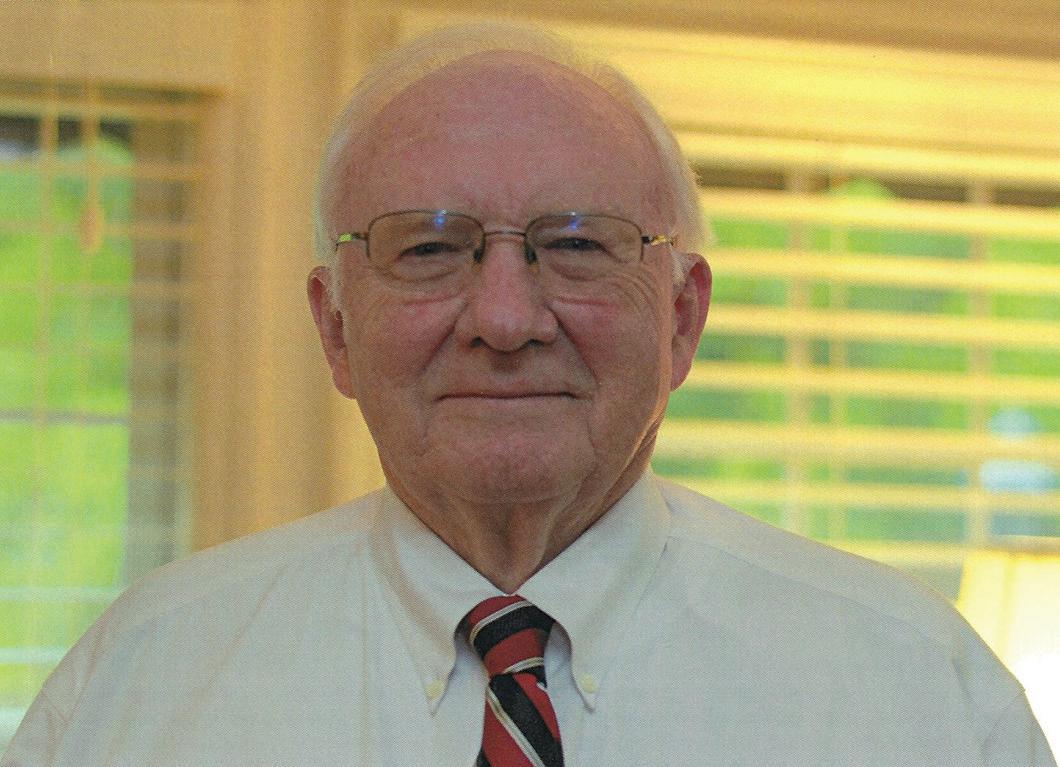
His children were born in 1958, 1961, 1963 and 1964.With Mount Holly being called home by the time his second child was born, he began to invest in his surroundings, becoming involved with the Chamber of Commerce, Junior Civitans and his church, which he still attends. He became chairman of the Mount Holly School Board in the mid-60s, before Gaston County, Gastonia and Cherryville’s
“We’ve got a real good group that’s grown together and worked together to bring Tuck Park (Tuckaseegee) up to the level it is now. At one time it was a ‘field of dreams,’ that’s all it was. Then we bought some adjoining property, and everything’s worked out real well.”
boards became one.
And Massey made himself a to-do list to help local schools.
He helped raise money for high school band uniforms, when Mount Holly High and Stanley High were ready to merge and become East Gaston.
He helped raise money to build East Gaston High School a football stadium. “That’s a big drive we had in the city, and it was a time frame when everyone pitched in really well on that,” he says. “Some of us went to see some really good prospects, and we received good money from people who had businesses in Mount Holly.”
He became chairman of Mount Holly Parks and Recreation, to improve opportunities for citizens to enjoy the city’s facilities. “It’s like being a Sunday School teacher. You get in there, and you’re in for life,” he says. “We’ve got a real good group that’s grown together and worked together to bring Tuck Park (Tuckaseegee) up to the level it is now. At
one time it was a ‘field of dreams,’ that’s all it was. Then we bought some adjoining property, and everything’s worked out real well.”
Massey was an integral part of the city receiving a $500,000 grant from the State of North Carolina, and the city providing a matching grant for the park. “Some of us had worked really hard contacting people,” he says. He says his Hall of Fame selection came as a surprise. “I feel like a lot of these people who have been selected, not just the athletes but the stand-bys like we are, we just want to help people in the community and help the young people,” he says. “Somewhere down the line, someone paid for a place for them to play.” ■
— By Kathy Blake
• Waxhaw native and Davidson graduate
• Played basketball and baseball in high school in Waxhaw
• Came to Mt. Holly in 1959 to join his uncle at Massey Hardware
• Served as School Board Chairman prior to consolidation of Gaston County schools
• Represented Mt. Holly on his church board and in the Chamber of Commerce
• Supported major fund raising projects that benefitted the youth of Mt. Holly
• Still actively serving on the Recreation Committee for the city of Mt. Holly
Time-travel backward to the mid-1960s…To the time when the Beatles were changing America’s music scene.
When the Vietnam War was in full force, President Lyndon B. Johnson signed the Civil Rights Act, the first Chevy Camaro and Ford Mustang hit the streets, Ozzie & Harriet were on TV and Roberto Clemente was showing the world how to play right field and win a dozen Golden Gloves.
In Mount Holly in the mid-1960s, 47 kids – 44 players and three managers – took that era and made it their own.
They played baseball for Coach Delmer Wiles, a Marine Corp. veteran, and formed unbreakable friendships while showing that nobody owned a baseball diamond like the Mount Holly High School Hawks.
The boys of 1964 through 1967 won 40 of 50 games, four consecutive Little 6 Conference championships, four-of-seven state tournament games and a roster spot in the Mount Holly Sports Hall of Fame. They continued the work of the 1950s teams, who were conference champs in 1954, 1955, 1957 and 1958. MHHS also won in 1971 and 1972.
“They set the bar high and expected every player to give his best every day,” says Eddie Wilson, a three-year starter from 1966-68. “The ’66 team was by far the best group of guys you could ask to play with.”
In 1964, with Buddy Guin on the mound and strong bats from shortstop Bruce Bolick, catcher Larry Hartsell, infielders Steve McCotter, Tommy McConnell and Buddy Hart, and outfielders Dean Auten, Phil White and Mike Shelby, the Hawks went 8-2 in the regular season and beat T.C. Robertson 8-6 in the playoffs’ first round. They lost 6-5 in the second round to East Wilkes after leading 5-1.
Tony Leroy McConnell (he goes by either name) and Dewayne Moore were the top pitchers in 1965 as the team went 10-0 in league play behind hitting from Jimmy Cook, Jimmy
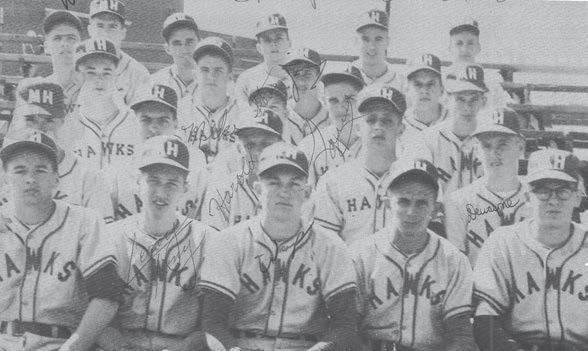
Blackmon, Tommy Foster, Hartsell, McCotter, Shelby, Auten and White and split two non-conference games with Hunter Huss. McConnell pitched a no-hit 2-0 victory over Clyde Erwin High in the first round of the playoffs, relying on his signature fastball. “I had no idea how fast I could throw. They didn’t clock it back then,” he says, “but I was fast enough to be slightly ahead of most high school baseball players. There was an article written about me and Dewayne Moore; they called us the Hawks’ M&M boys. We were a good combination.”
After the Erwin win, he says, “Coach Wiles thought I was the greatest thing since sliced bread, so he pitched me in the next game with only two days’ rest, and the ball felt like a grapefruit and we lost. He took me out about the fourth inning and Dewayne shut them out the rest of the way, but were already too far behind.”
“We knew how to get ‘em out,” Hartsell says, of catching McConnell. “I would make a target, and he would hit it. Tony had the hard stuff, and Dewayne had the big curve.”
With McConnell and Moore handling pitching, and Bill Neely, Steve Hansel and Eddie Wilson joining the seniors as team leaders, Mount Holly had another 10-0 regular season in 1966 and won its first two post-season games. They lost 2-0 to North Davidson to end their season 12-1 after advancing to the Western NC finals, the furthest a MHHS team had gone since 1954, when the school was 1A state runners-up. “The seniors were great, unselfish, team-first players. Most of the seniors also were on the football team,” Wilson says. “Many of them (Shelby, Hartsell, McConnell, Moore and White) got scholarships and went on to play college ball.”
“A favorite memory is winning the conference championship a number of years, and having that brotherhood as I went through my illness,” says Phil White, who was diagnosed with nonHodgkins Lymphona at age 16. “Them being considerate and kind is what I valued the most. It was a good group of kids.”

White is 70 now and works as a clinical therapist in Oklahoma. “I was just honored to go through school and play sports with them,” he says.
Eddie Womack took over as top pitcher in 1967 and helped the team of Blackmon, Hansel, Neely, Wilson, Mike Manes, Mike Henderson, Danny White and WG Clayton share a conference title with Lowell Holbrook with 7-3 records. Lowell beat the Hawks in a play-in game to advance to the playoffs.
“I was a huge fan of all of these teams. I hardly ever missed a game at Costner Field and I remember listening to WCGC and Eb Gantt cover one of the playoff games, and heard it live when Jimmy Blackmon knocked a homer over the left field fence in Swannanoa in a survive and advance game,” says Gary Neely. “You can imagine my excitement when, as a freshman in 1967, I was inserted into a big game against Lowell and Whistle Howard when one of our regulars got ejected after a fight broke out at second base in the bottom of the first inning. That helped me to earn a letter on the last of this series of champions, in a conference that was always competitive, and in which the Hawks usually came out on top.”
Hartsell, who went on to play for Belmont Abbey, recalls a story about Wiles, at the end of Hartsell’s senior year: “God knows, the first year you hated him, and by the last year you loved him. I was by Delmer ’s side in all kinds of baseball, being the catcher. When I was a senior, Delmer got in to take a few swings, and it was the last time I was going to be playing for him, and Delmer was chatting that he would have made the big leagues if it weren’t for the curve. I got Leroy in there and got Delmer to take a couple of swings, and we didn’t do signals in batting practice but this time I signaled for the curve, and he threw that thing, and it curved beautifully and Delmer took a big swing and missed it. And he looked at me and said, “You knot head!” I knew he couldn’t run me but a few more wind sprints, and that was the end of my career in Mount Holly baseball.”

Today, the players are scattered but many keep in touch. McConnell lives in Denver and is passing his knowledge to his sister ’s 5-year-old grandson.
“My arm, it hurts too bad to throw now,” he says, “but I did throw the other day with my sister’s grandkids, and I was surprised I could still throw and play catch.”
Hartsell 70, is a retired CPA and lives in Myrtle Beach. He keeps a scrapbook of those 1960s teams – all the photos, newspaper clippings, scores and statistics.
“When I look at this stuff,” he says, “and how successful we were, it was amazing. We had good coaching, a good work ethic, and somebody had talent. You know? Every Friday night, there must have been 4,000 or 5,000 at the football field, and every spring night, two games a week, baseball was always crowded. That’s the way people were. It’s the way it was.” ■
— By Kathy Blake

• This 4-year period produced 4 conference champs and a record of 40-10
• 1965 and 1966 teams both achieved 10-0 records in the Little Six Conference
• 1964 and 1965 teams each won first round playoff games
• 1966 team advanced to the third round, the state semifinals round
• 1967 team lost a game to Lowell that determined who would represent the conference in the state playoffs
The day President John F. Kennedy was shot – Friday, November 22, 1963 – Tony McConnell was in Mrs. Miller’s geometry class at Mount Holly High School when news drifted down the hallway. “We were absolutely shocked,” he says. It also was the day of the state championship football game and McConnell, the team’s offensive guard, wasn’t sure how the afternoon itinerary should go. “But North Davidson, who we were playing for the championship, was already on the bus on the way to Mount Holly when he was shot, so they decided to go ahead and play.
“We played through the shock and the sadness and the pain, and we made it. People stuck together, and there was tremendous attendance that day at a football game, despite the tragedy on a national level. People were able to muster the energy to support a football team.”
Sports is like that sometimes. A Band-Aid to cover the outside world for a few fleeting hours.
For athletes, McConnell knows, the most important thing
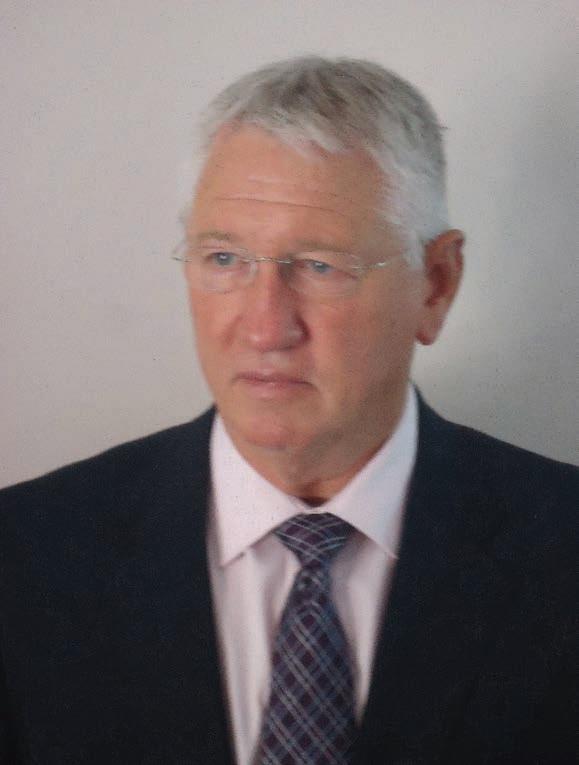
about sports often is the camaraderie and daily sweat that bonds teammates who don’t always care about win-loss records but play because they truly love the game.
“You get to know people really well. And you get to the point where you don’t really want praise; you have mixed feelings about it,” he says. “To be part of something with a group of people can be unifying and gratifying.
I’m glad to be able to be associated with the ballplayers and the town and the people who just came out and supported us by watching us play. It was a good time, the ‘60s, the time when we grew up.”
These are some of McConnell’s favorite stories, about the games that led to his spot in the Mount Holly Sports Hall of Fame as a standout pitcher for the 1965 and 1966 baseball teams. The ’65 team went 10-0 in league play and finished 12-2; the ’66 team went 12-1 and advanced to the Western NC tournament final.
• About a baseball game with Asheville’s Clyde Erwin High, when he pitched a no-hitter, struck out 11 and walked two in the first round of the state playoffs:
“During batting practice, we were watching them hit, and they were good ol’ mountain boys, and they were hitting the ball out of the ballpark, and we thought we were probably going to have a tough game. Either their first or second batter, I threw a curve ball and he hit the ball about a mile, but he hit it about a foot foul. The catcher, Larry Hartsell, called time out and he comes to the mound and says, ‘Leroy, your curve ball looks like a grapefruit. It’s fat, it’s slow, and it’s hanging. If you throw any more of those, they’ll kill you. But your fastball is really strong, so I’m not even going to give you a signal. Just keep throwing a fastball until they hit it.’ They never hit it. They couldn’t get the ball out of the infield the rest of the game.”
• About playing for Mount Holly Hall of Fame member Delmer Wiles, who coached football and baseball. Wiles played football at Wofford College before joining the Marine Corps. He coached baseball 12 years at MHHS, going 10448 with six conference titles:
“Baseball was spring training for football, because we had to run sprints and he got us in shape in the spring for that fall’s football season. He used to do a lot of endurance things with us, for example we’d do a fireman’s carry where you throw somebody across your shoulders and carry them all the way around the football field, and in front of the stands, so it was larger than the football field. I hated to be carried. Then you
had to swap and carry your buddy all the way around.”
Did Wiles’ conditioning regimen help?
“Yeah, it did. We were in such good shape that football was a cakewalk. We liked him. He brought winning ways to Mount Holly. As long as you’re winning, people are happy.”
• About his best memory, and what it’s like to look really, really small:
“I guess the best is when you’re in a really critical situation and you strike a batter out, or in football when you get a good block and somebody gets a first down or has a good run. In a South Stanley game, when we got beat, I was about 165 pounds, not too big, and here was a guy in front of me that was 6-foot-4, 240. And he wasn’t fat. He looked at me on the first down we played and said, ‘Hey, boy, I’m gonna kill you.’ And that’s what he tried to do, and I tried everything to block him. But there was a play called where we double-teamed him, and I set him up and the other guy cleaned his clock. I got up and laughed at him.”
• About growing up with his best friend/ cousin/ high school

and college teammate Phil White:
“We lived close together and played together, and we were closer than brothers, really. We stayed together all the way through our first three years of college, and roomed together, and finally went our separate ways.”
• McConnell was given the award for Most Desire at a MHHS football banquet, presented by Wiles, and the yearbook staff named him Most Likely to Succeed. He graduated from engineering school at the University of Tulsa, then worked at nuclear plants in North Carolina, South Carolina and Texas.
In his last eight years with the McGuire Nuclear Plant, he was station manager. He retired in 2002 from Duke Energy.
“I worked at one plant for 18 years, and we kept it safe. I used to say you have to have a focus that out-trumps everything else. You can’t make mistakes.
“Like that foul ball that was almost in, you can’t make a mistake.” ■
— By Kathy Blake
• Started first game of the football season in 1963, broke his leg and missed the rest of the championship season
• Was tri-captain of football team as a senior in 1965
• Threw no-hitter against Asheville Clyde Erwin in the playoffs in 1965
• Along with Dewayne Moore, became known as the “M&M Boys”. Together they compiled a record of 20-0 in the conference in 1965-66
• Pitched for legion team and for Oral Roberts for 2 years
• A nuclear engineer, Tony was station manager at McGuire Nuclear for 8 years
There were two Phil Whites at Mount Holly High in the 1960s.
One excelled at football and baseball – played center field and batted lead-off because he was lightning-bolt quick at stealing bases, and was football defensive player of the year as a senior for his work at cornerback and safety.
The other Phil White was asked by his English Literature teacher if he’d rather wait in the library during class, instead of study about poets and death, since White, 16 years old in March of 1965, had just been diagnosed with non-Hodgkins lymphoma and the prognosis was cruel.
White, the athlete, excelled on the field despite a chronic knee injury and breaking his left collarbone. Twice.
White, the student, chose to stay in English class. He also chose to live.
For White’s efforts to beat other teams as an athlete, and his ability to beat cancer as a man, he gained a place in the Mount Holly Sports Hall of Fame.
“I was one of those kids who could take two steps and be at

full speed, so they would hope I got on,” he says of his baseball success. “I don’t know how many bases I stole. I remained the first hitter, and was always surprised the four years I played. It was like, ‘Wow! I hit the ball.’
“In football, I think the most fun was just playing together and surviving the practices and wind sprints that (2007 HOF inductee) Coach Delmer Wiles put us through. He was a retired drill instructor from the Marines.
“But I have a very checkered history with illness and injury throughout high school. I was that guy who always had the illness or injury.”
White, 70, played for MHHS from 1962 through 1966. The baseball team was conference champs his sophomore, junior and senior seasons and the 1964-67 teams are Hall of Fame inductees for their four consecutive conference championships, 40-10 overall record and 4-3 record in the state playoffs.
White and his cousin, Tony Leroy McConnell, the pitcher, were born about 40 hours apart, he says, and were like twins, “But he’s the twin who got the brains. I think what I valued most was just the relationships and the brotherhood on those teams.”
White’s cancer diagnosis was terminal.
“They sent me home to die, and I didn’t. So they gave me six months, and I lived, which obviously was a surprise to the doctors,” he says.
McConnell got a ride to Oral Roberts University, and White followed with a scholarship, too. It was the era of the Vietnam War. “You could get a college deferment if you went and maintained a 2.0. You wouldn’t get drafted until you got out of college,” White says.
He left Oral Roberts after two years, but when his draft number was called, he was politely told “no thanks.”
“I went for the preliminary physical and testing and was given a 4-F, not physically capable of serving in the military because of my knee, and the cancer I contracted when I was 16 still was in the red zone, the danger zone, at 19, so I went back to college,” he says.
The path led to Tulsa.
“When you’re a kid in America growing up, your dream is not to end up in Oklahoma, most likely, but I came out here for school, for baseball on scholarship, and thought I’d never come
back,” he says, “but I came back for two weeks in 1984, and this is the longest stay-cation in my life.”
White went to grad school at the University of Oklahoma to become a clinical therapist.
In football, I think the most fun was just playing together and surviving the practices and wind sprints that (2007 HOF inductee)
Coach Delmer Wiles put us through. He was a retired drill instructor from the Marines.
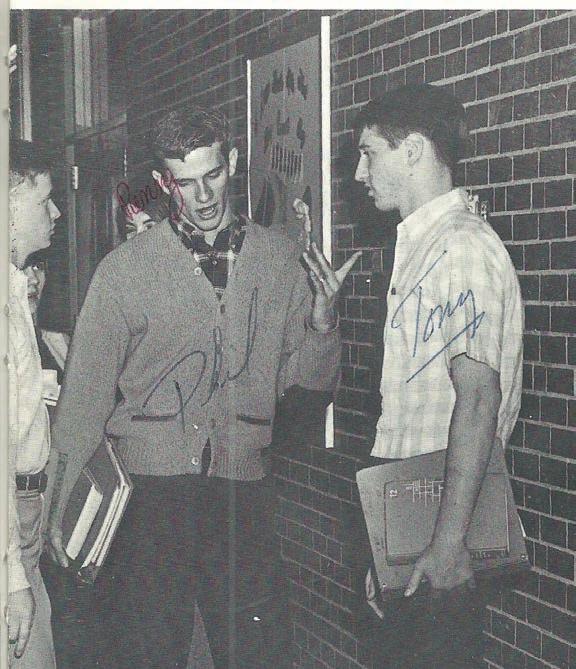
“When you come to see me, it’s about being insane and becoming more sane. We can at least aspire to sanity, whether we get it or not,” he says. “That’s my crazy work in life. And I worked with the chronically and mentally ill for many years, then went into private practice, and now I’m currently working with people coming out of the Federal Bureau of Prisons. It’s all been fascinating the whole time, from the mentally ill to people who are felons. It’s quite a population.”
He keeps in touch, some, with the guys from Mount Holly.
“I just really enjoyed making it through the ups and downs. My most special memory on the teams was in the spring, we were playing ball or doing our spring training, and I was diagnosed and the guys all rallied around me,” he says. “They signed a baseball that I’ve kept with me through the years, and for me personally, that was the most special experience, from their visiting me and being considerate to me, and to sign that baseball and give it to me.
“Since I was a kid, I’ve moved so many times, but I’ve made it a point to never get rid of that ball.” ■
— By Kathy Blake
• A speed merchant on the football team, Phil returned kicks, and played wingback and defensive back
• Was tri-captain in football in 1965
• Leadoff batter and top hitter in 1964 with .380 average
• Overcame a diagnosis of nonHodgkins lymphoma his junior year, but was in the starting lineup a month later when the season opened
• Played Legion ball and at Oral Roberts, as leadoff batter and centerfielder
On a vacant lot off Old Highway 27 in Stanley, in an era when girls didn’t have equal opportunity, Sue Carlton Whitley learned to play the games boys played, and excel. A decade before Title IX showed up in school gymnasiums, she already was becoming a master of the games.
“Everyone came down to our house to play ball, and I played with the boys. We had several kids who lived on that road, and there was a vacant lot and I played football, basketball and baseball with them growing up,” she says. “I had an older brother, and he played Little League, and I would go watch, because girls couldn’t play.”
Her freshman year at Stanley High – 1972, the year Title IX was born – girls’ options were limited: “All they had was basketball. They were a smaller school, and that’s all they had.”
So Whitley, 61, played. She played all through high school, after Stanley merged with Mount Holly High to form East Gaston. As an EG senior, she played softball in the fall, basketball in winter and threw shot and discus for the track team in spring. “I also ran one lap in the 440 or mile relay, but I wasn’t a sprinter. If it involved throwing, I could do it,” she says.
If it involved dribbling, shooting or hitting, she could do it, too. And it landed her in the Mount Holly Sports Hall of Fame.
Whitley – whose one-year-older brother Frank played football, basketball and baseball in high school – was on East

Gaston’s first girls basketball team, when the school opened her sophomore year. The team was undefeated in conference play, went 15-1 in 1973-74 and Whitley was named Female Athlete of the Year, All-Conference and tournament MVP. She also was the first girl to score 1,000 points.
“It was my senior year, and they stopped the game and gave me the game ball. Then I took it over and gave it to my mother,” she says. At 5-foot-7 she played shooting guard and small forward, depending. True positions were different then, too. “We had a point guard, then two wings. We pretty much played an offense where we had one point guard, or three outside and two under the basket. So on offense, I played outside, and then on defense I played underneath.”
She also played second base and shortstop as a junior and senior on East Gaston’s first softball team, a team that won the first Gaston County championship. “I don’t think we officially added the team until I was a senior. We may have had a team, but it was more of a pick-up team,” she says. “We were 3A, and as a matter of fact, some of the 4A schools didn’t have teams.”
Her basketball skills were mentioned when she went college-hunting, but girls still were forging their way in such areas. Whitley went to college on an academic ride.
She chose UNC-Greensboro for its math program – a high school teacher had attended there – and she was awarded a Catherine Smith Reynolds Scholarship, “the best that UNCG offers. It was a merit-based scholarship. It could have been a full thing, but it was based on what your parents made.”
A success in the classroom – she also has a Master’s degree from UNCG – she also was a successful gym rat. “Everyone down at the gym thought I was a P.E. major, except the instructors, because I wasn’t in their classes. I played field hockey, basketball and softball. I met the basketball coach when I was there on my scholarship interview, and she also coached the field hockey team, and they had volleyball in the fall, and I’d never played either one,” she says.
But, so what?
“They had field hockey tryouts the week before volleyball, and I loved it. I played center/forward on the freshman team, then the goalie graduated, so I played goalie on the varsity team. I didn’t start on the basketball team until my senior year. When you’re 5-7, you’re not real tall in college. Softball was my best sport,” she says. “I played at shortstop two years and second base two years and started all four years.”
Her best memory, though, comes from basketball.
Whitley’s freshman year
at UNCG, the team was playing a tournament at Winthrop. The opponent was Tennessee, coached by legendary Pat Head (later, Summit). “We tied up the game, and our point guard had fouled out in the second half, so I was playing when it went into overtime,” she says. “We beat them in overtime, and I scored the basket that beat Tennessee. I just happened to get a rebound and put it back in, right at the buzzer.”
Whitley moved to Rock Hill in 1988 because of her husband David’s job. She teaches eighth-grade math at Sullivan Middle School and coaches girls basketball. She has three married children and two grandchildren. And just when she thought she knew all of her academic and athletic accomplishments, she recently discovered another. Back in 1975, when she graduated from East Gaston, computers were not in the vocabulary. Stuff got recorded by hand.
“I found out I graduated No. 1 in my class in high school,” she says. “Because East Gaston was a combination of Stanley and Mount Holly, they didn’t have a valedictorian. But I was No. 1.” ■
— By Kathy Blake


• Was a top basketball player for Stanley High as a freshman
• Led EGHS in scoring all three years, scoring more than 1,000 career points
• Won Athlete of the Year twice at EGHS, playing basketball, softball and track
• At UNCG played basketball, softball and field hockey all 4 years
• Played 5 years of summer softball for the Roadrunners and Howard’s Furniture, making All-State 4 times
• Currently coaches middle school basketball at Sullivan Christian School in Rock Hill
If there were a teammate the guys wanted on their side, it was John Logan.
A big guy – 6-foot and 270 pounds – he was the tackling machine on East Gaston football’s defensive line, the heavyweight wrestler who won the majority of his matches with quick pins, the track team standout who could hurl a 12-pound shot put 58 feet, easily, and sail a discus into oblivion.
“I threw discus one year, but the guy who always won it was John Logan,” says former East Gaston teammate Jeff Lee. “Big John threw it about 170 feet.”
Logan, who took his talents to Johnson C. Smith University and graduated in 1987 with a bachelor’s in Business Administration, joins the Mount Holly Sports Hall of Fame for his list of accomplishments at both schools. He casually recalls some of the details, when asked, but his attention now is focused on family and his job at Federal Express, where he’s worked for 24 years.
“Everybody said, ‘You ought to play football,’ and I had a

“I think the best thing that happened to me as an athlete is this guy that I wrestled who went to Hunter Huss, I think it was in the ninth grade, he beat me. And we met again my senior year, and he beat me again. And we met again in Charlotte in the semifinals of the Sectionals, and I beat him 9-1, and that was the best moment.”
lot of speed for my size, but once I started I really enjoyed it, I had a passion for it,” Logan says. “I wasn’t all that great. I had my moments, but I really loved the game and I think more than anything, I loved the team concept. I enjoyed being around those guys and made a lot of friends.”
Logan, who turns 54 in August, started for East Gaston’s football as a junior and senior and was voted All-Gazetteland as a senior in 1982, an award given by the Gaston Gazette. “I think I averaged something like eight tackles a game and five sacks a year,” he says. “My senior year we played against Kings Mountain, and I made 11 tackles that game.”
He was the Southwest 3A Conference heavyweight wrestling champion in 1981-82 and broke a record to receive an award for fastest pin in the Albemarle Invitational. “I think I was Most Valuable in wrestling that year. Most of my wins were by pins,” he says. “I pretty much dominated the conference, but once you go beyond that and go to the State level, the competition gets a lot tougher. But I made State, and made All-State in wrestling at the 1982 tournament at Parkland High School in Winston-Salem.”
During track and field season, Logan was the Warriors’ shot put and discus power, winning the Southwest 3A shot title in 1980, ’81 and ’82 and setting a school record of 58 feet. He also owned the Gaston County record.
Logan was recruited by J.C. Smith, Western Carolina and Southern University, in Louisiana, but wanted to stay close to home. Like in high school, Logan was a multi-sport athlete for the Golden Bulls.
He played football all four years and started every game. “There were a few games I shouldn’t have started because I was injured, but I played anyway,” he says.
He was the CIAA conference Defensive Player of the Year in 1983 and All-CIAA in 1983 and ’84 in football, and was CIAA conference champion three years – 1984, ’85 and ’86 – in shot put, indoor and outdoor. And, as in high school, he broke the school record. In college, the shot weighs 16 pounds. Logan launched it 54 feet. The old record had stood for a decade.
But for all his winnings and titles, Logan says a scenario he remembers most is about not finishing first. It’s that never-giveup mindset that great athletes have.
“I think the best thing that happened to me as an athlete is this guy that I wrestled who went to Hunter Huss, I think it was in the ninth grade, he beat me. And we met again my senior

year, and he beat me again. And we met again in Charlotte in the semifinals of the Sectionals, and I beat him 9-1, and that was the best moment,” he says. “The whole time, ninth grade all the way through high school, I had him on my mind, that he was better than me, and I was able to beat him.”
He says his Hall of Fame induction was somewhat of a surprise. “I’m just thankful someone thought enough of me to nominate me and put me in,” he says. “I had my moments, but I never felt like I was on that level. But I’m thankful someone thought that much of me.” ■
— By Kathy Blake

• All-Gazette defensive lineman as a senior at EGHS in 1982
• Held school and county and conference records in shot put at EGHS
• Was conference heavyweight wrestling champ for EGHS his senior year
• All-CIAA in football twice and Defensive Player of the Year as a senior
• 3-time CIAA shot put champion, both indoor and outdoor, at JCSU. Held school records in the put
• Is in his 25th year working for Fed Ex
It was a good era to be in Greenville, S.C.
The Furman University football team, Division 1-AA in the 1980s, was beating bigger teams, doing big things and making sure Coach Dick Sheraton, who had coached the Paladins since 1978, had a proper send-off before joining North Carolina State after the 1985 season.
Jeff Lee, who had played for East Gaston, was at Furman on a football scholarship in 1985, the year the team advanced to the National Championship.
“It was the first time Furman had ever been to a Nationals, and was the last time to play for Coach Sheraton,” Lee says.
“We went to Tacoma, Wash., and played in the Tacoma Dome, which was exciting, to go that far away. Our competition usually was very regional, except when we played Marshall, so we usually took a bus. So to get on the airplane was really nice. It was an exciting week, with all the fanfare that goes
Football had been in Lee’s life since Little League age. At East Gaston, his work at tight end and linebacker got him noticed by a few college scouts. He was a four-year starter on offense, and on defense as a junior and senior.

with it.”
Furman lost 44-42 to Georgia Southern in a back-and-forth game to finish the season 12-2. But Lee’s story didn’t end there.
He was named to Furman’s Greatest Modern Era All-Time Team and was named to the All-Southern Conference team in a coaches’ poll. The Greenville News described the 6-foot-3, 216 pound Lee’s college career and his team selections: “One of the best blocking tight ends ever in Furman’s runoriented offense. In addition to his powerful build, had good hands with the big-play ability, as over a quarter of his receptions went for touchdowns. Had 39 career receptions, but 10 of those were for touchdowns.”
His success at Furman and East Gaston landed him in the Mount Holly Sports Hall of Fame.
Lee, 54, remembers other big games at Furman, starting with his freshman year in 1982.
“Probably our biggest upset was when we beat the University of South Carolina,” he says. “And we beat N.C. State twice and we beat Georgia Tech once. The USC game was my freshman year and was the first game I started. You play in front of 60,000 fans, and I’d never done that before.”
He finished his college career with 36
catches for an average of 16.4 yards per catch, 590 yards and 10 touchdowns. He was voted All-South Carolina second team in 1984 and 1985, and All-Southern Conference in 1985, as chosen by the media.
Lee graduated in 1986 with a B.A. in Business Administration.
Football had been in Lee’s life since Little League age. At East Gaston, his work at tight end and linebacker got him noticed by a few college scouts. He was a four-year starter on offense, and on defense as a junior and senior. “My junior year was our best year,” he says. “We were vying for the playoffs but were one game short, and my senior year we were at about .500.”
He was a three-time letterman and was voted AllConference and All-Area as a senior. He made The Charlotte Observer’s All-Piedmont first team on defense.
He also was All-Conference in track his senior year in high
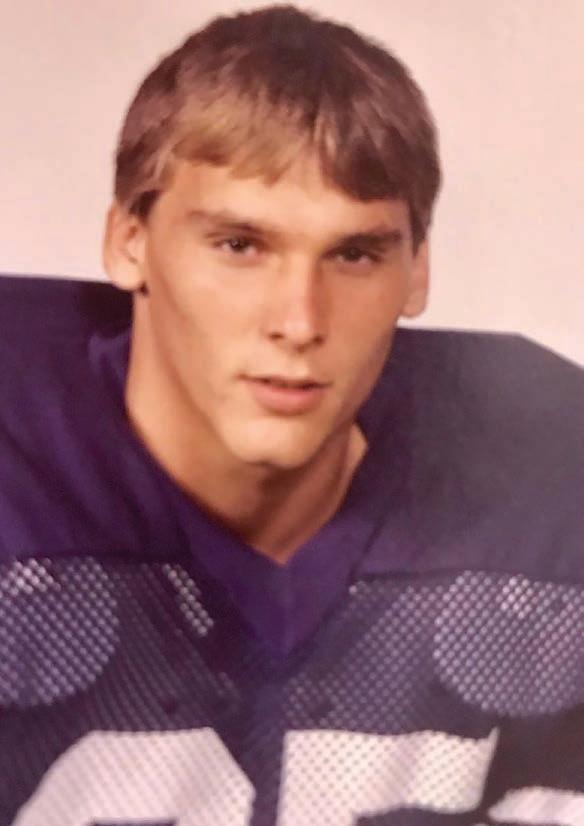
school, in discus.
After college, Lee became a Navy SEAL and was stationed six in years in Virginia Beach.
Today, he lives in Virginia a few miles out of Washington D.C., where he works in private security.
He keeps a few newspaper clippings about his time at Furman, but he doesn’t dwell too much on statistics.
“I just know we had a really good coach, and a really good team,” he says, “and I liked the school.” ■
— By Kathy Blake
• Was All-Conference, All-Area and Observer All-Piedmont first team as a senior at EGHS
• Also made All-Conference in track in the discus at EGHS
• Made All-Sports Media Association 2nd team in 1984 and 1985 while playing tight end for Furman
• In 4 years at Furman, caught 36 passes for 592 yards and 10 TDs
• Played in the Division II National Championship game in 1985, where Furman lost to Georgia Southern 44-42
• Became a Navy Seal after college, which led to a career in private security
If buildings could talk, the old gymnasium at Mount Holly High School would have a lot to talk about. The gym was built by the Works Progress Administration in the late 1930s and opened for use by 1940. The gym was multi-purpose from the beginning. A stage was recessed into the wall opposite the stands. The gym was used for graduation exercises for about 10 years, before the auditorium was built and opened in 1952. The stage was used by bands that played for the many dances that were held there, such as the homecoming and junior/senior dances. Eventually, the stage area was walled off and an entry was made on the street side of the building, and that part of the gym served as the bandroom for band director Robert Black and his finetuned marching band of the 50s through the early 70s.
The gym’s locker room was always damp and dank, as it is today. The old windows cranked out to allow ventilation in both the gym area and locker rooms. The locker rooms never had adequate ventilation, and so they maintained their unique odor from the start of school through the end of school each spring. While the gym continues to be used, it is now leased to the City of Mount Holly for a nominal fee, and the locker rooms are off limits. In fact, a new gym was built for the middle school some 20 years ago, and is the main sports facilty serving the middle school teams today.
The WPA built the athletic fields as well as the gym, starting in 1938. Teacher Frank Rankin said when the football field was built that he expected that some day a player would be running the ball down the field and would be struck by an erupting artesian well. He said this because he had observed the work crews laying crossties and dirt over the springs that crossed the property to build the field up to its current level. So far, Rankin’s prediction has not taken place, but the underground springs may explain the gym’s odor.
Semipro-baseball teams sponsored by local textile mills were among the first teams to use the locker rooms and baseball field. When first built, the baseball field was positioned with home plate and the backstop located farther to the north, close to the three school buildings. Baseball teams from Mount Holly High enjoyed much success, with conference championships in 1954 and 1955, led by ace pitcher Max Sherrill and coached by Ken Bost to consecutive 13-4 and 14-4 records. Delmer Wiles coached the baseball Hawks for its last 12 years as a high school from 1961-1972, compiling a record of 104-48, including 6 conference championships. The final team, in 1972, tied for the most wins with a 14-3 record. The 1964 and 1965 teams, led by Tony McConnell, Dewayne Moore, Larry Hartsell and Steve McCotter advanced to the Western N.C. state semfiinals, with records of 12-2 and 12-1, respectively.
Football over the years has been consistently outstanding.
George Fincher was among the first football players to play on the field created by the WPA prior to the outbreak of WWII. Fincher, a bruising running back, was the only Shrine Bowl player ever to come out of Mount Holly. It is said that at the 1942 Shrine game, Fincher carried the ball down the field several times, only to have the N.C. team give the ball to an Asheville player by the name of Charlie “Choo Choo” Justice to carry into the end zone. The 1941 Hawks, coached by Seaton Holt for his 15th and final year, were 8-0 and outscored their opponents 167-13. The team was led by the likes of Howard Horton, Boyd Arndt, Paul Harkey, Paul Springs and Gwyne Baker, in addition to Fincher. The 1942 team, the first under coach Dick Thompson, was 8-1-1, with many top players back from the unbeaten team. The post-war teams of 1945 and 1946 featured several players who had dropped out of school to join the war effort, then returned to school as 20-somethings. The 1956 Hawks of Coach Vernon Morrison, with Tommy Wilson and Perry Toomey leading the way, were undefeated until falling to Granite Falls by a touchdown in their second playoff game, after having one touchdown called back on a tough call. Then Coach r Wiles led the 1963 and 1967 Hawks to unbeaten Western N.C. State 2A Championships. The ‘63 team was 11-0, outscored the opposition by 273-40, and featured Bruce Bolick, Gene Thompson, Larry Hartsell. Johnny Carpenter, Steve McCotter and many other outstanding players. The ‘67 team that finished 12-0-1 and outscored opponents by 343-61, was led by Eddie Wilson, Eddie Womack, Rick Anthony, John Farrar, Danny White and Hugh and Tim Frazer. Coach Wiles led the Hawks for 12 years and won seven conference titles while compiling a record of 86-30-5. Billy Megginson led the Hawks to conference titles in 1957 and 1958 to round out Mount Holly’s football domination of the Little Six and Little Seven Conference on the field that was built by the WPA.
In the early 1940s Hutchison-Lowe Field near the Madora Plant was lighted for nighttime use by the semipro-baseball and women’s softball teams that were very popular at that time. The Hawks football team played many of its home games at that site under the lights, although they also played a few games at the field behind the gym. When playing at Hutchison-Lowe, the Hawks would dress out at the locker room and then run quartermile uphill to the football field.
The 1953 season brought about the dedication of the athletic fields to Uncle Jim Costner, a businessman who was known as the biggest sports fan in Mount Holly at that time. Costner and his wife Aunt Gertie Costner, a beloved school teacher, were never blessed with children of their own, so they “adopted” local athletes as their surrogates. Costner was known to help transport local players to away games, usually taking 4 players in his personal car, in addition to himself and his driver. He never missed a home or away game if he could help it. Fred Hutchison
donated the lights from Hutchison-Lowe Field, and Duke Power donated lights that it owned at Superior Yarns, as well as the labor to relocate all that equipment to the newly upgraded field.
Costner Field went on to host home games for the Hawks for 20 years, until Mount Holly High merged with Stanley High to form East Gaston High in 1972. Costner Field has continued to serve as the home field for Mount Holly Middle School and various youth football and baseball teams since that time.
One of the first outstanding teams to use the locker rooms at the gym was the Hawkettes of 1945, led by Lois Herring and coached by L.C. Ward to a 13-5-1 record. Wells Sigmon coached the girls the next year and they improved to 15-3-2, with a conference championship. As a senior, Herring and Coach G.D. Wilson won another conference crown with a 121-1 record. Billy Megginson coach the girls team to another conference title in 1960 with a 10-2 record. Coach Joe Spears came to Mount Holly in 1960 and led the Hawkettes to a record of 148-80 over a 12-year period ending in 1972. He coached four conference champions, including 1966 at 17-4; 1968 at 183; 1969 at 13-6 and 1971 at 14-8. Some of the best performing Lady Hawks on those teams include Jan Williams, Barbara Moore, Lynne Williams, Wanda Adams, Debbie Baker, Debbie Priest, Kristen Wiles and Janet Frazer.
Perhaps one of the best boys teams in the early years of the gym was the 1950 Hawks, coached by Max Beam, with star players Harold Helton, Jim Cross and Charlie Drumm leading the way. Coach Spears began coaching the boys in 1964 and coached both the boys and the girls for the last eight years of Mount Holly High. The best Hawk team ever in terms of winning percentage was the ’68 Hawks, who finished 21-4, losing out in the regional finals. The next year the Hawks finished 4th in the state in all of
The Mount Holly Sports Hall of Fame Committee would like to recognize the City of Mount Holly for its efforts in preserving a very special piece of sports history in Mount Holly.
For many years the Gymnasium at the Middle School was viewed as an old building that needed to be torn down. For those of us who grew up in Mount Holly from the 40s-70s this was a building where we played basketball, and participated in physical education in the form of a lot of running laps, climbing ropes and wrestling inside the gym. It is easy to walk into the gym and remember no air conditioning and sweating as a fan watching a basketball game played in a packed gym or remember carrying someone up and down the bleachers and lots of running in our PE classes.This is possible because the
2A basketball. Finishing the year hot, the 1969 Hawks won the conference tournament for the second straight year, then won the district tournament. At the state tournament, the Hawks upset the top-ranked Vaden-Whitley team which was unbeaten at 26-0. The Hawks lost the semifinals and the consolation game to finish 18-9. Dan Hope and Chick Moore led the 1968 team. Returnees and leaders of the 1969 state tournament team included Richard Jessen, Gary Neely, Keith Hopper, Robbie McCorkle and Freddie Whitt. Some of the best performing Hawks of the hardwood not previously mentioned include Don Killian, the other Jessen brothers Bob, Barry and John, and Roger Lawing.
The history of the old gym would be incomplete without mention of the ropes that hung from the rafters all those years. As a rite of passage, all freshman males were required to take PE, which included the mandatory daily climbing of a rope and touching a rafter. In the end, all but a couple dozen of the thousands of young men who attempted to master the ropes failed to meet the challenge. Nevertheless, it was an imposing challenge for many before they learned the knack of making the climb.
Finally, the gym holds memories for sixth-graders who were taught to promenade to the Virginia Reel by Miss Bell, who later became Mrs. Johnson. For many, that class served as the introduction to the gym. Most would eventually return at some point to use the gym in one way or another - to take gym class, to compete in basketball or intramural boxing, to cheer teams to victory, to attend convocations, to elect class officers, and often to bring their second and third generation gym rats to repeat the process. Many thanks are due the WPA and to the many coaches for providing and fully utilizing this facility, Mount Holly’s gym. ■
— By Gary Neely, assisted by Bobby John Rhyne
city has kept the same atmosphere alive in the way they have preserved the building.
Working with the county, the City of Mount Holly has taken over the responsibility of its upkeep and has restored it to a functional facility for sports to continue to be played. The outside is more appealing with the upgrade to windows, walkways and signage. On Saturdays or week days you can see the gym being used for youth basketball and volleyball games. The front of the building was the band room used for the MHHS Band to practice as well as the high school Chorus and is now a game room. It is now more of a multi-use facility for the people of Mount Holly to enjoy.
Thanks you City of Mount Holly for helping to keep this historical sports facility alive and well in Mount Holly ■
—
By
Scott Pope






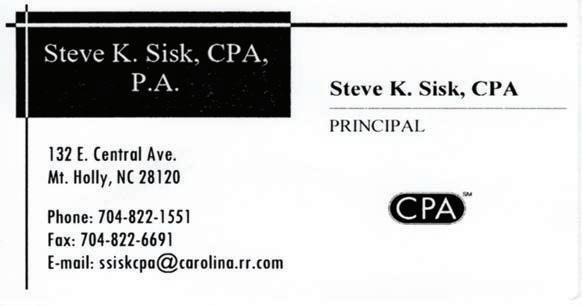













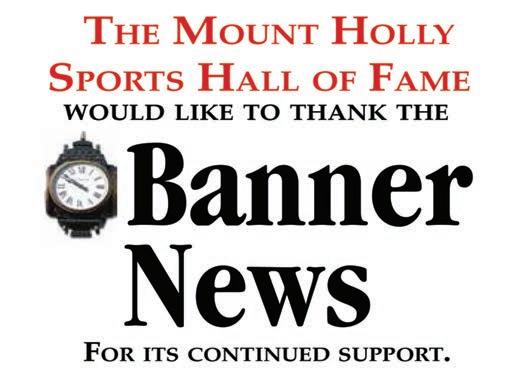
For its continued support.














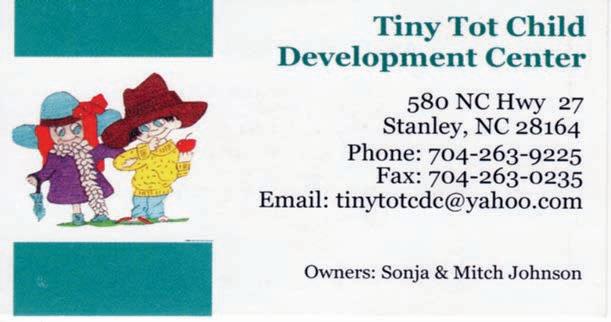
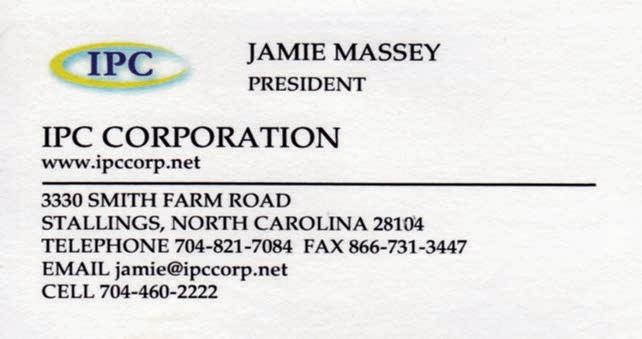







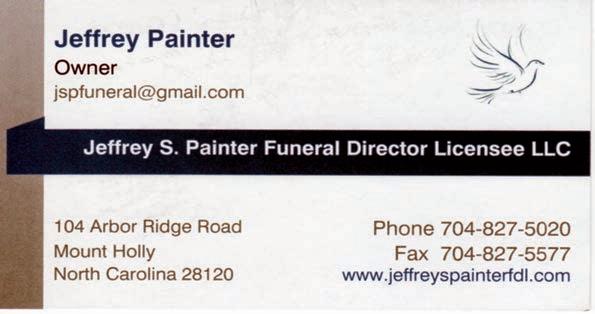


1964
Jimmy Bailey (65)
Buddy Guin
Ken Jones
Gene Thompson
Bruce Bolick
Tony McConnell (65,66)
Larry Hartsell (65,66)
Tommy Foster
Eddie Womack (66,67)
Mike Manes (66,67
David Cox (66,67)
Bucky Holland, mgr.
Johnny McNamara, mgr.
1966
Eddie Wilson (67)


Jimmy Cook (65,66)
Buddy Hart
Tommy McConnell
Bill Neely (65,66,67)
Harold Moore (65,66)
Jimmy Wilson
Dewayne Moore (65,66)
Blair Smith
Mike Shelby (65,66)
Steve Hansel (65,66,67)
Jimmy Blackmon (65,66,67)
Larry Horton (65)
Jerry Luckey
Phil White (65,66)
Dean Auten (65)
Steve McCotter (65)
1965
Charles Craig (66,67)
Loy Cannon (66)
Mike Henderson (67)
WG Clayton (67)
Jimmy Best (67)
Danny White (67)
Terry Hollis, mg.r
Harold Boswell, mgr. (67)
Ronnie Johnson, mgr.
1967
Harry Stowe
Gehrig Wiles
Gary Wilson
Larry Wilson
Gary Neely
Gary McManus
Steve Cook
Roger Blackmon
Jimmy Hoffman, mgr.
Eddie Rhyne, mgr.
Note: parentheses indicate additional years played on conference champs

2018

The Mount Holly Sports Hall of Fame Supports these non-profits.

Mt. Holly Community Relief Organization

Mt. Holly Middle School Football
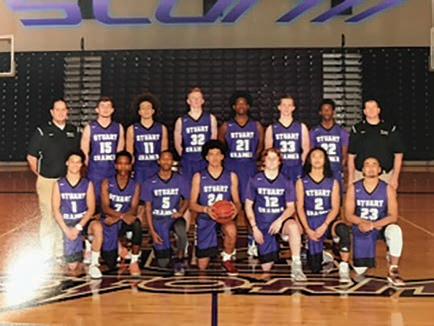

Stuart Cramer High School Basketball
Ida Rankin Elementary Safety Patrol



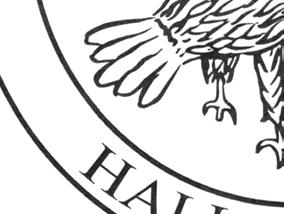

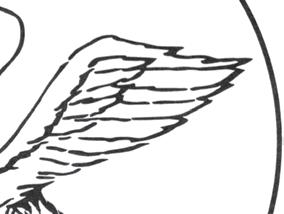



e Mount Holly Sports Hall of Fame was established to honor our community’s rich sports history and to recognize the outstanding individuals and teams who have excelled over the last century on behalf of our city.
Our ultimate goal is to educate the community about the outstanding accomplishments of these individuals and teams, instill civic pride in our citizens and promote Mount Holly. Our emphasis on education has led us to develop a scholarship program through our local high schools.
In addition to education, the Mount Holly Sports Hall of Fame supports charitable contributions for youth groups and local civic organizations by committing to pay out 10% of its year end balance of funds to non-pro ts. e MHSHOF has worked out a process of displaying inductee sports memorabilia at the Mount Holly Historical Society for the bene t of the community.

Mt. Holly Middle School
Jaquez Gwinn • Ashlyn Presson
Stuart Cramer High School
Wesley Hall • Haley Bourhill
